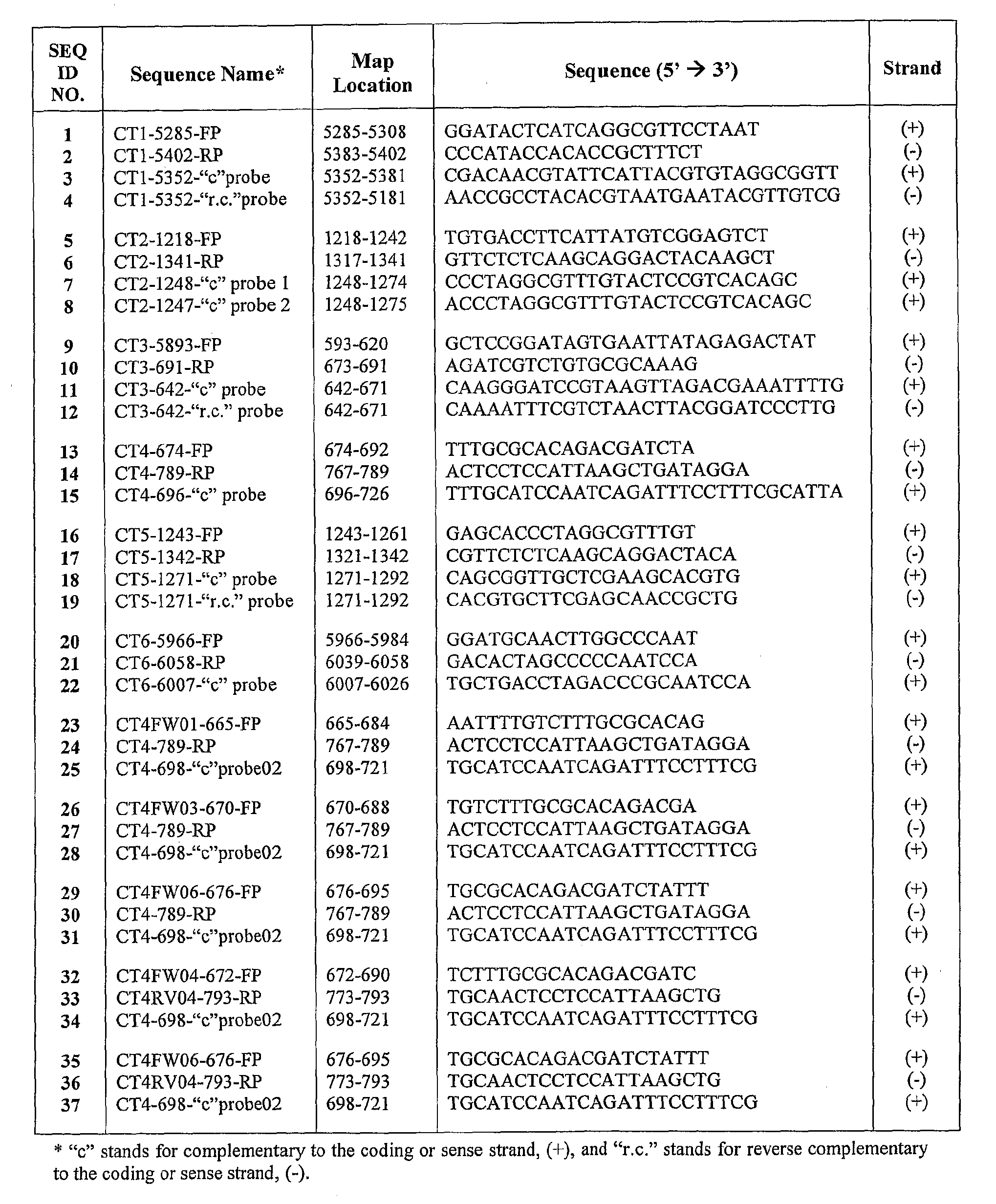Chlamydia Trachomatis Specific Oligonucleotide Sequences
a technology of oligonucleotide sequences and chlamydia trachomatis, which is applied in the field of chlamydia trachomatis specific oligonucleotide sequences, can solve the problems of chlamydia infection that can progress to serious reproductive and other health problems, infertility and epididymitis, and prostatitis of the urethra scarring, etc., to achieve rapid detection
- Summary
- Abstract
- Description
- Claims
- Application Information
AI Technical Summary
Benefits of technology
Problems solved by technology
Method used
Image
Examples
example 1
Specificity of Chlamydia trachomatis / Neisseria gonorrhea Multiplex Assay
[0134]A multiplex TaqMan kPCR assay was used to test fifteen (15) different Chlamydia trachomatis (CT) serovars (i.e., A, B, Ba, C, D, E, F, G, H, I, J, K, L1, L2 and L3) and forty-six (46) different Neisseria gonorrhea (GC) isolates.
[0135]The amplification and detection in a single, sealed reaction well was carried out using Stratagene's Mx3000P™ Real-Time PCR System (Stratagene Inc., San Diego, Calif.). The assay master mix used in these experiments contained Taq DNA Polymerase, buffer, reference dye (ROX), and MgCl2, AmpErase™ UNG (1 units / μL), from Applied Biosystems (Perkin-Elmer Applied Biosystems, Foster City, Calif.) or QIAGEN (Hilden, Germany); TaqMan® oligonucleotide primers and probes were synthesized in-house or purchased from BioSearch Inc. The kPCR reaction mix was comprised of 25 μL of master mix and 25 μL of purified DNA.
[0136]The results obtained are reported in Table 3. These results show that ...
PUM
| Property | Measurement | Unit |
|---|---|---|
| Volume | aaaaa | aaaaa |
| Pressure | aaaaa | aaaaa |
| Fluorescence | aaaaa | aaaaa |
Abstract
Description
Claims
Application Information
 Login to View More
Login to View More - R&D
- Intellectual Property
- Life Sciences
- Materials
- Tech Scout
- Unparalleled Data Quality
- Higher Quality Content
- 60% Fewer Hallucinations
Browse by: Latest US Patents, China's latest patents, Technical Efficacy Thesaurus, Application Domain, Technology Topic, Popular Technical Reports.
© 2025 PatSnap. All rights reserved.Legal|Privacy policy|Modern Slavery Act Transparency Statement|Sitemap|About US| Contact US: help@patsnap.com



